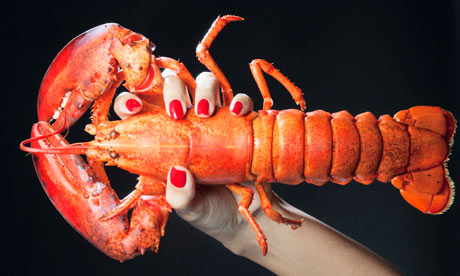
It is two years this month since my mother died, which may seem a gloomy way to start a column called the Happy Eater but it really isn't. Of course there is loss. But with time, memory brings a certain sweetness, too; if you live a life at the table and had my mother, well then, there are more than enough cues for good memories. She was the one who taught me how to eat. Not so much in the functional sense, although there was that; we have to learn our table skills somewhere. It lay more in enthusiasm. Both my parents had endured childhoods of little rather than plenty and they were determined to banish all of that from their own kids' lives. A full table was not merely a mark of appetite. It was a victory.
There was, when we were growing up, a simple rule in our house, one that now operates in mine: you cannot say you don't like something unless you have tried it. This came in handy when the naughtiness of adolescence came my way – I was only trying to find out whether I liked it – but as a kid it opened the doorway to all manner of fun. It was my mum who showed me how to eat my first oyster, grinning from ear to ear as the accessories piled up around us: the frame for the tray of ice, the tiny flat two-pronged fork, the muslin-wrapped lemon, the shallot vinegar and Tabasco. Dress it as you will, she said. Check it's been released from its sticking place on the shell with the fork then, whoosh, down the hatch in one. Chew if you like, but not too much. Try it with a sip of this Sancerre. Sniff it. Smells a bit like cat's wee doesn't it. But doesn't it work well with the oyster. Yes, mother, it does.
She adored the theatre and any food which came with a bit of that was OK with her; even better, if it required strict instructions. She loved steak tartare, but needed to be asked how piquant she wanted it, and would brighten further if the final mixing of the egg yolk into the chopped beef happened tableside. Although she wasn't especially fond of snails in their butter-slicked shells, she understood why I loved them, and took pleasure in showing me how to hold the tongs, wrist loose, grip just so. A few years ago I lost a bet with her; the winnings were lunch at the Fat Duck on me. I wasn't sure she would like it. For years she had been a regular amid the red velvet plush and certainties of Rules, the oldest restaurant in London with its brass trim and menu of game; when the Wolseley opened and proved itself reliable at the Mitteleuropean schtick she quickly embraced it. They did a good steak tartare there. As did the Ivy, though Sheekey's was the place for oysters.
So what would she make of Heston Blumenthal's exuberant modernist fancies? I had no idea. But if the Fat Duck is anything it is pure theatre: the moment the waiter bathed the foamed green tea palate cleanser in liquid nitrogen, the vapours rolling out across the table, she was sold. Not that she was overly impressed by the gloss and shine of that world. True luxury didn't need spin, she said. One night a few years ago my wife and I met my parents for dinner. On the menu my mother spotted "lobster and chips". She nodded slowly, in recognition. "Now that," she said, "is class." We both ordered it and sat, side by side, bibs in place, the emptied shells piling up around us as we worked. We were happy. My mother was right.

